We may receive a commission when you make a purchase from one of our links for products and services we recommend. As an Amazon Associate we earn from qualifying purchases. Thank you for support!
Writing a bestselling book is probably every writer’s dream. In today’s post we look at how to write a bestseller novel with 12 tips to help you get there.

Many people want to write a book that sells, but only a few manage to do so. And the people who go on to complete their book either end up being rejected by publishers, or get published but only sell a few copies.
What Exactly is a Bestselling Novel?
According to publishing studies, on average, a new book sells around 250-3,000 copies while in circulation.
Selling more copies than the average gives your book a higher chance of landing on the bestsellers list on Amazon, Washington Post, New York Times, or Publisher’s Weekly. But you also have to remember a lot of bestsellers sell millions of copies – which means you probably need to more realistically shoot for at least 100,000 sales of your book before it gains enough traction to stay on the Bestsellers list.
A lot of lists also have a minimum requirement on how many books you sell per week. For most major lists, this means you have to sell at least 5,000 copies per week to compete with the other books on the market.
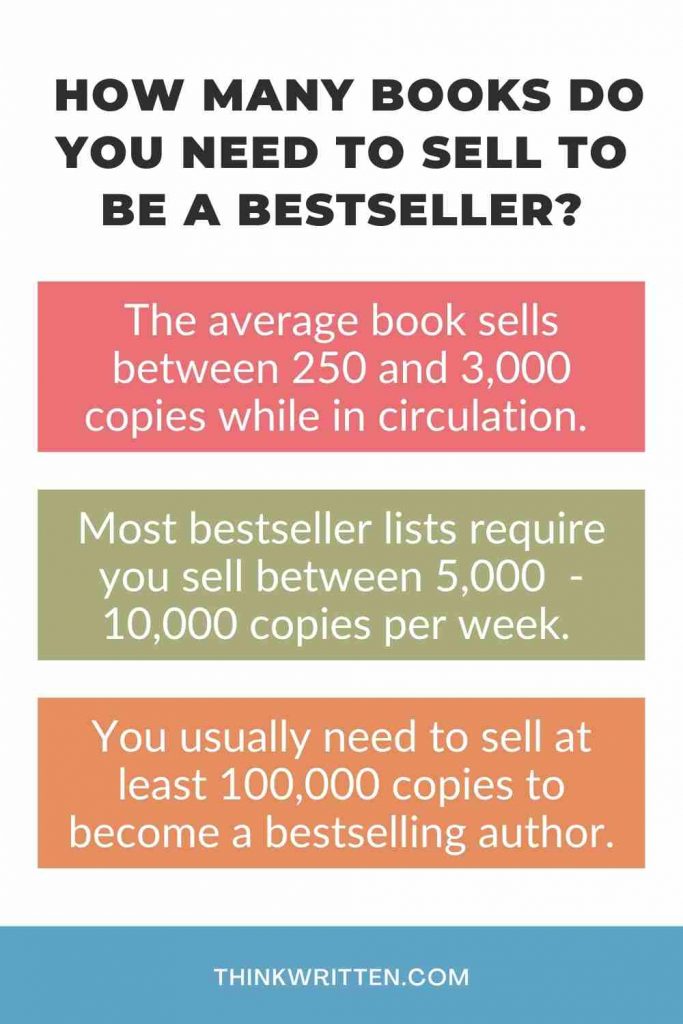
Most publishers will only sell a small print run at the beginning to gauge the success of a book. Only when it reaches over that 3,000 sales mark do they consider printing a second run.
Your first goal as an author who hopes to be a bestselling novelist is to sell at least 5,000 copies in the first run. This will make it so your book stays in circulation longer and helps you gain traction in selling more.
Of course, in order to write a bestseller, you have to make sure there is market demand for it. To sell 100,000 copies or more of a book requires that there are at least 100,000 people out there who are willing to buy it.
Now that we know what a bestseller is, let’s go back to our initial question. Let’s focus our discussion on writing a bestselling novel. There are vital elements to consider whether a story is a good read, and if people would be willing to buy it.
Some authors seem to have mastered the art of writing bestselling novels. It’s incredible how brilliant they are. But great authors admit to still needing writing advice to help them finish writing their book.
There’s no guaranteed formula for writing a book that is guaranteed to sell hundreds of thousands of copies. But you can adopt some good practices from bestselling authors to better improve your odds.
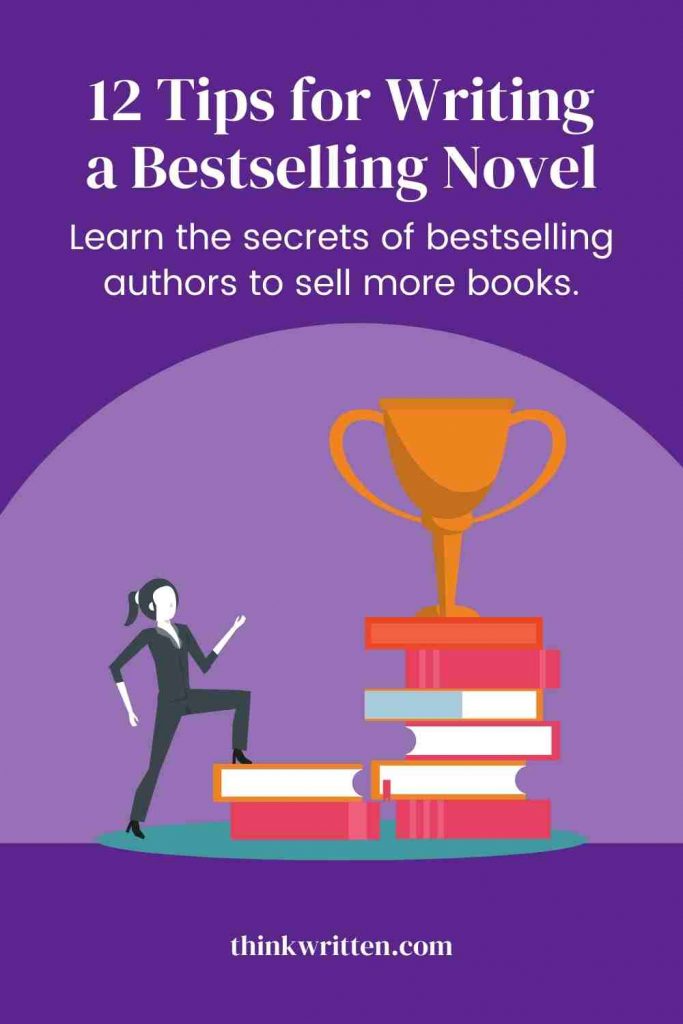
How do you write a bestseller?
Below are 12 tips to help you write the next potential bestseller.
1. Do You Market Research Ahead of Time
There are hundreds of book genres and sometimes getting on the bestseller list with a smaller number of copies sold is possible. You might be able to hit the romance novels bestsellers list or even a bestseller non-fiction book in the arena of personal development.
It’s important to find your niche and know who your audience is and what they want. But you also want to be careful that the niche is not too small.
You might be the world’s leading authority on an obscure topic like millwork, but let’s face it – other than the professionals in that industry, you’re not going to have much mass market appeal.
Start with doing some research on how many sales there are for your genre and books that already exist on your topic. This will help you gauge if your story idea is one that will appeal to thousands, if not millions of readers.
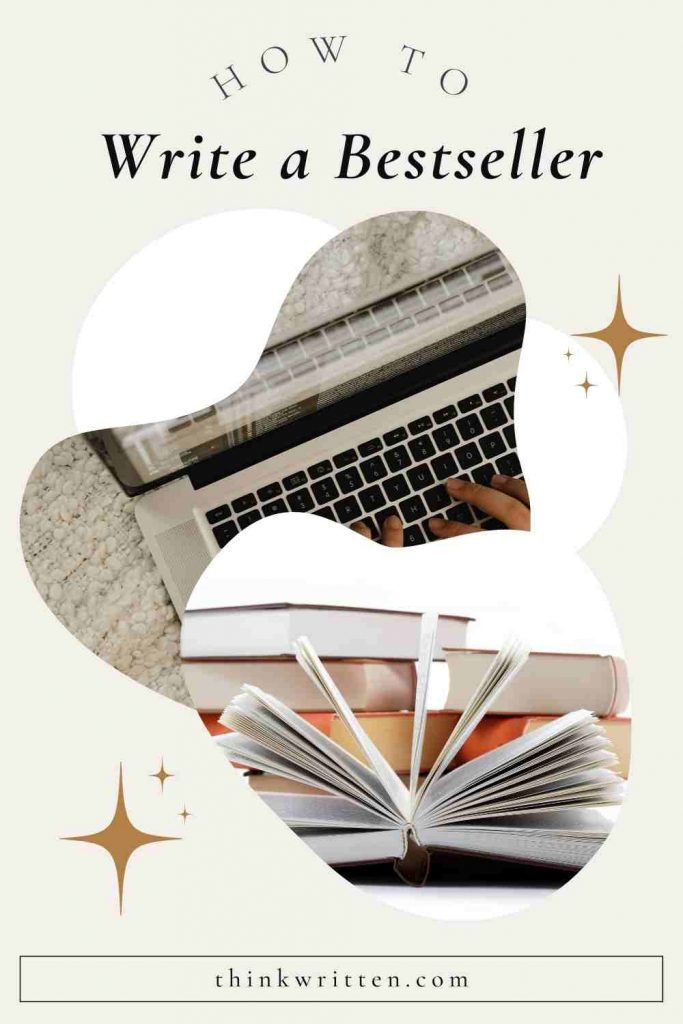
2. Develop a great story idea in your genre
If you’ve tried and gave up finishing your book before, it could be that the idea was not strong enough to warrant writing an entire book. Maybe your idea at that time is just good for a blog post.
You need to develop a strong story idea that is unique. Think The Hunger Games or Harry Potter – both of these books when they came out were completely different from other books on the market in their genre.
Exploring good story ideas is easier when you read extensively. Great writers read a lot. Always bring a notebook. List down anything that comes up, even if it seems odd at the moment.
Book ideas sometimes spring from a passing thought or observing people you don’t know. A writer sees the world differently. Keep the possibilities open. When an idea starts to form, nurture it, and explore its potential to become a good story.
Then of course, ask yourself important questions:
- Who wants to read this story?
- Is there a need for this story in the world?
- Are there hundreds of thousands of buyers in this market?
Keep thinking of story ideas until you find one that meets the criteria to be set up for success.
Best selling author Sophie Kinsella suggests you should write the book that you want to read.
What do you enjoy writing about or reading? You’re going to spend a long time writing your novel, so it’s better to write something you are passionate about. Otherwise, you will bore yourself and give up even before you get to the middle of your book.
While taking tips from other writers helps a great deal, remember that what works for others may not work for you.
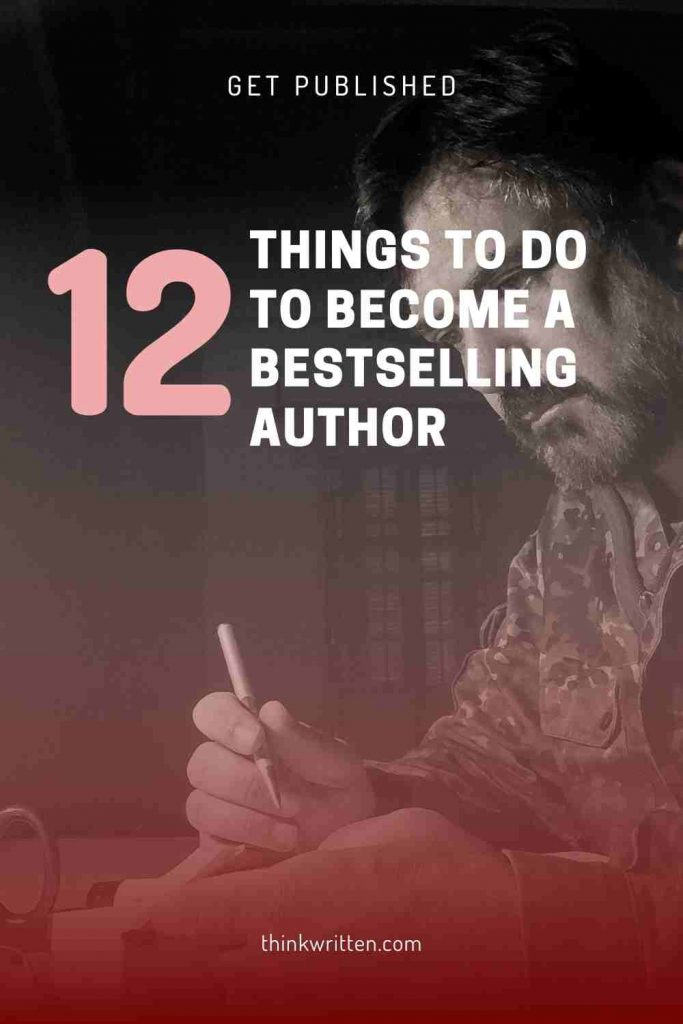
3. Find character inspiration for your story
Create compelling characters that can amuse or charm your readers. You can even add frightening ones, depending on the plot and genre of your story. Some writers take inspiration from real people when writing fiction.
Other writers have the knack for inventing peculiar characters. Lemony Snicket is one author who comes to mind – his characters are anything but ordinary!
Your main characters should have a name and distinctive characteristics, so your readers can remember them. You want characters your audience can connect with and will remember long after the story ends.
Learn how to develop strong characters here.
4. Find your writing voice
A challenge most beginning writers face is finding their voice. This is done through choosing the right language to establish your own unique tone and style of writing.
It’s also important to think about your own unique perspective when telling a story. There is no one else in the world who is like you who has seen what you have seen and experienced what you have experienced in life. All of these things can seep into your writing to give your writing style a unique perspective.
Your tone of voice also can make a big difference in your story. Going back to Lemony Snicket, there’s a dry witty humor that’s present on almost every single page. That sets the tone of the story of misforuntate events.
In other books, the tone of voice might be uplifting and cheerful, or maybe even downright despondent. Some authors are all matter-of-fact straight down to business while others are more flowing and flowery in their tone.
Finding your voice as a writer can sometimes be a challenge – but with much practice you will find a style that is unique to you. Again, read a lot – even books you wouldn’t normally read – this will all help you establish your unique writing voice that will set you apart from other writers.
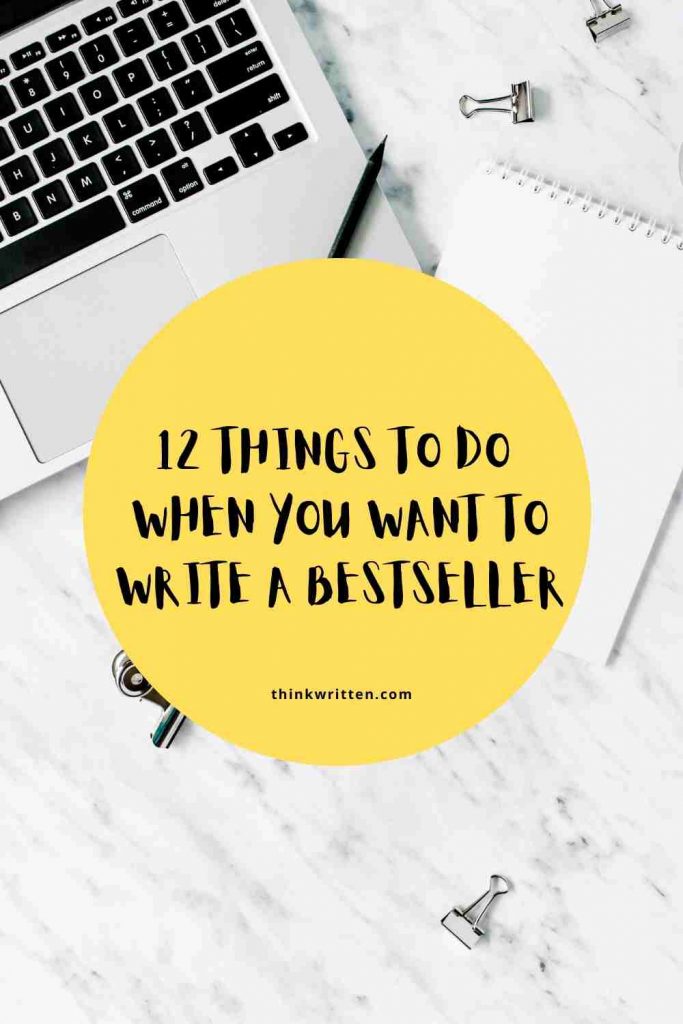
5. Set a strict writing schedule but take time for short walks
Naturally, in order to write a bestselling novel you actually need to sit down and write it!
Set a deadline and hold yourself accountable. Enter your writing schedule on your calendar, with your target number words or pages to write each day and the number of hours you will dedicate to writing.
Make no room for distractions unless necessary.
When there are times where you absolutely do not feel like writing, take a break. Step away from your book and walk outside. If you find yourself procrastinating a lot, set a schedule for it.
Sometimes you have to embrace procrastination. But always honor your deadline.
Here’s some tips to minimize distractions while writing.
6. Write a stunning opening line
The first line of your story will set the tone of your enthusiasm and build the momentum to writing the rest of your book.
You should not put writing this off and proceed with writing the chapters. A suitable opening line can be dramatic, philosophical, surprising, or poetic.
With people’s attention span getting shorter and tons of other novels competing against each other, a novel’s opening line needs to immediately entice the reader.
If they don’t like the first sentence you wrote, they might end up not make the purchase at all.
Remember the goal of every sentence you write in your novel: to get the reader to want to read the next one.
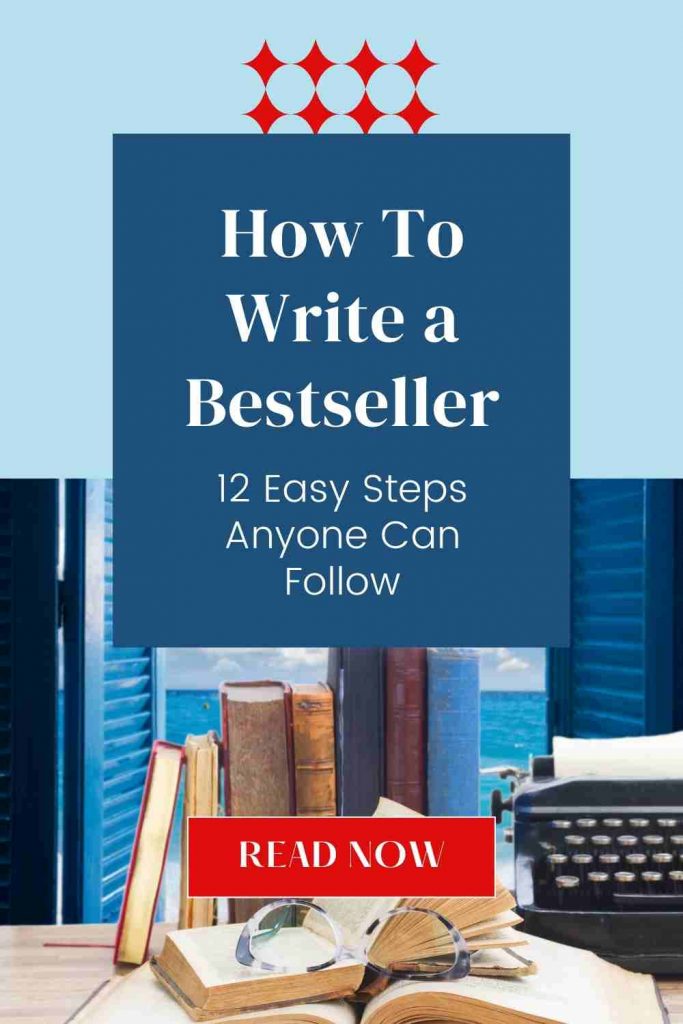
7. Create Conflict, Tension, and Confusion
Present your readers with a story where everything goes well, and characters are at peace with each other, and you’ll quickly see your readers find something more interesting to read.
One way to keep your reader’s interest is by having a well-crafted conflict that will keep your readers turning the pages to discover how the tension escalates.
For inspiration, look into some recent bestselling fiction novels to see how other writers achieve this. What conflicts are present in the story? Are there any red-herrings in the story that throw you off track to make for a surprising ending?
8. Write an Emphatic Ending
You’ve gone through so much to finish your book, so make the end satisfying for your readers. If you have several ideas for your bookending, choose one that strikes the heart.
Readers are usually captivated by something that is moving. It lingers with them long after they’ve finished reading the book.
Think of the different books you’ve read as a writer:
- Which books have horrible endings that make you angry that you wasted time reading it?
- Which books leave an open ending that have you hoping for a sequel?
- Which books made you feel the most satisfied – like the story is left where it should be?
- Which books leave you so moved that it sticks with you months, even years after you’ve read it?
Understand that when a book ends on a powerful note, it sticks in readers minds. These readers then go on to tell their friends and family about the book – which of course leads to more sales. More sales means increasing your odds of writing a bestseller novel.
9. Have a memorable title
They say you shouldn’t judge a book by the title, but naturally we almost always do. A title has to reach out and grab our attention, but more importantly it needs to really hit on what the story is about.
Do not trick readers into using a catchy title with completely nothing to do with your story, just like some clickbait headline. If you do this, your readers will no longer trust you the next time.
Nothing is more frustrating to a reader than to find out a book with a great title is not about anything they hoped it would be.
Your title should give a glimpse of the novel’s genre and should catch the reader’s attention. You want your readers intrigued enough to check what the book is all about.
10. Get an Editor and Test Your Book Before Publishing
Remember the 5 Steps Writing Process: After you write that first draft there is a lot of work in getting it ready for publishing.
Have others read your first draft and take their suggestions to heart when you are in the revising process. Make sure there are no holes in the plot and that you get rid of stuff that isn’t absolutely imperative to the story.
For editing, make sure you have an excellent proofreader who not only can correct your spelling and grammar mistakes but will also stay true to your tone of voice and unique writing style.
Nothing is worse in a book than inconsistencies and spelling and grammar mistakes.
Confused about these steps in the writing process? Here’s the difference between revising and editing and here’s how to revise your writing for the best results.
11. Make Sure You Have an Author Website
Every serious writer should have a writer’s website. Some may argue with this statement. But to succeed as a bestselling author, you need readers who are willing to buy your book.
Your website is a place where people get to learn about you and your work. This is also where you begin promoting your book even before you start writing it. You can engage your target audience and get them involved in your writing process that they anticipate the book launch.
Creating your author website is actually something you should do long before your book is even submitted to publishers. Publishers are drawn to authors who can bring their own audience because that means more sales for them.
If you are shopping your manuscript around to different publishers or trying to hire a literary agent, what do you think is going to want them to take a risk on you?
If you’re a nobody, that’s going to be a lot more work to sell books than if you already have an audience eager to read what you have written.
Take some time and work on your author’s website. Learn how to get more traffic and really engage your readers. Here’s 8 Things Every Author’s Website Should Have.
12. Be Selective About Your Publisher
Your publisher can make or break you as a novelist. Some publishers are very hands-on and will give you tons of support as an author in marketing and selling your book. They may have exclusive distribution contracts that can help your book get into tougher markets and reach a wider audience.
Other publishers, not so much. You might be completely on your own. Oh sure, your book will show up on their website, but how many people are going to the publisher’s site to find their next read? Chances are, not too many.
When choosing between a publisher, look at their most recent best-sellers. If they have many and they are interested in your manuscript, that’s a good sign that your novel is marketable and will have good odds for success if they accept your work.
On the other hand, if there current list of novels are ones no one is talking about and never heard of, it’s a good chance they aren’t the best at picking out the home runs for bestseller material. They may still be profitable for the author, but they aren’t going to get you to selling 1 million copies or more.
If you find you are rejected by your dream publishers, keep trying. This book you just wrote may not be a bestselling novel, but it’s not a bad thing to get it out into the world anyways – it can set you up for being more established so that you can attract the attention of the better publishing houses later.
Thinking about going the self-publishing route? This works best if you are in a very specific niche or genre and if you already have a dedicated audience interested in your work and subject.
Joanna Penn is an excellent resource for those of you who want to be bestsellers while going the self-publishing route. Be prepared that sometimes it is a game about quantity and that series tend to do better in the self publishing arena.
For more tips on publishing, see our post on How to Publish Your Novel.
So you’ve written your novel. What’s next?
Congratulations, you have completed your book! But the work does not end here. The next step involves a lot of marketing to actually get your book sold.
The first part of marketing is branding yourself as an author. Your book cover design is very important because the better design a book has the better odds it will catch someone’s attention at a book store, especially if it is featured in one of their displays.
A unique design that stands out is going to help your readers quickly identify one of your books when you see it. Think Dr. Suess, Roald Dahl, Shel Silverstein – their covers are memorable and have some sort of consistency between each book.
Remember: publishing and selling your book will determine whether your book will land in the bestsellers list.
As an author, it’s important to start marketing long before the book has even been printed and distributed to stores. You want to build up anticipation and you want your readers engaged so that when it does hit the stores they can’t wait to buy it and talk about it with others.
Here are 50 Tips for Marketing Your Book as an author that can help you get on track for success.
Writing a bestseller novel is not easy – no one ever said it would be – but these 12 tips will help set you up for the best chances of successfully selling more copies of your book.
Do you have any tips for writing a bestseller novel? Share your thoughts in the comments section below!






